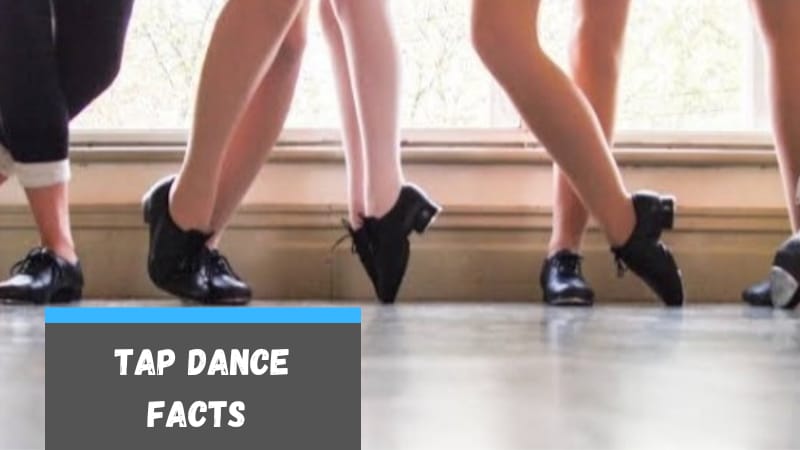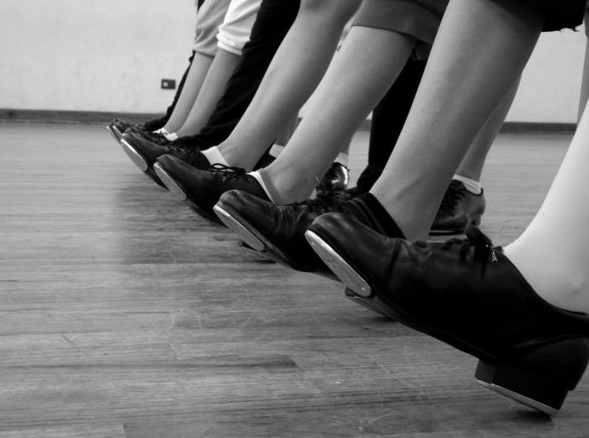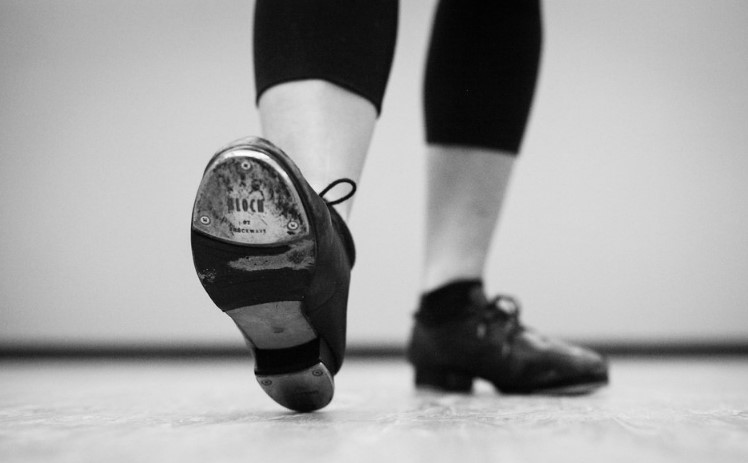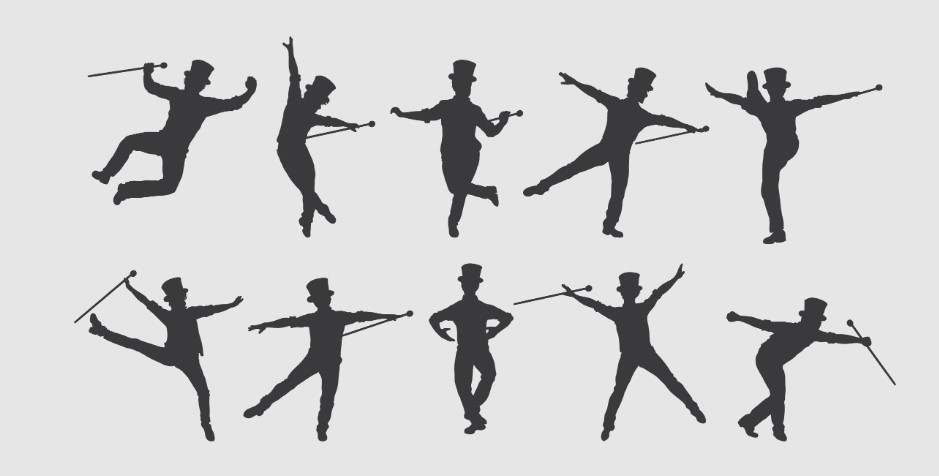
What is the tap dance? What is the history of tap dance? Who was the first tap dancer? Who invented tap dancing? You will find interesting facts about tap dance here.
Tap dance is rhythmic footwork in which the dancer uses specially designed tap shoes. They use these shoes to create an audible beat by tapping their heels and toes on the ground in time.
Tap dancers make distinctive tapping noises with their feet by fastening metal taps to the toes and heels of tap shoes with wooden soles.
It originated in the United States as a fusion of many traditional dances from other cultures, including the Irish jig, the African American Juba dance, the Scottish step dance, and the English clog dance.
Even though tap dancing was no longer trendy by the 1950s, its impact is in the development of jazz dance. Now more than ever, young dancers can take tap courses at any number of dancing studios.
Here are some of the facts about tap dance:
Facts About Tap Dance
1. Rhythm tap (sometimes called jazz tap) and Broadway tap are the two most common forms of the tap dance genre.
2. Tap dancers mimic the rhythm of a drum by tapping the floor with their shoes. The soles of tap shoes are of metal, and you can tap them together to create a tapping sound.
3. In order to create tap dance, there was a fusion of Irish clog and step dancing with the beats of West African drumming in the seventeenth century.
4. Around 1902, tap became a common practice. By the 1920s, a hybrid form was emerging in which metal plates, known as taps, attached to leather soles.
5. A wide variety of films prominently featured tap dance from the 1930s through the 1950s. The inclusion of tap numbers in film and television became standard.
6. Keep your knees loose and your weight on the balls of your feet as the first rule of the tap. Tap lessons can help you become more musical, expressive, and in tune with your body.
7. Famous boxers often take up tap dance to enhance their coordination and balance. Athletes and musicians, especially drummers, can benefit from developing these abilities.
8. We celebrate the 25th of May as NATIONAL TAP DAY. Bill “Bojangles” Robinson, widely regarded as the father of tap dancing, was also born on the same day.
9. When done properly, you can understand tap dance as a language that expresses the meaning of movement in connection to the rhythm.
10. In the mid-to-late 1800s, tap dancing began appearing in nightclubs, streets, and Broadway.

11. The tapping sound made by tap dancers was a source of communication between the dancers and the band or orchestra to indicate tempo and rhythm.
12. You can use any Hard-soled shoe as a tap shoe. True, actual tap shoes are more comfy as they’re especially for tap dancing.
13. Tap dancing is a fun way to get your heart rate up and your feet moving, whether you’re a dedicated dancer or not.
14. You can modify today’s tap shoes to feature screws to create different sounds. A tap shoe’s “tone” relies on its weight and surface form.
15. Tap shoes have screws for more than just securing the metal taps in place. The dance can have a deeper or lighter tone by adjusting the screws.
16. As the name implies, “soft-shoe dancing” refers to tap dancing with non-metal soled shoes. When performing the soft-shoe tap and slide, the use of sand is to amplify the sound.
17. 20th Century Tap dance was a prominent Vaudeville variety performance and part of the Harlem Renaissance’s creative output.
18. Jeni Le Gon (1916-2012) was a tap soloist in the early 1900s. She performed in pants rather than skirts, so she developed an athletic style.
19. As a fusion of African and Irish dance styles, tap dancing is an interesting cultural hybrid. That’s why you could claim that tap dancing just happened.
20. Slaves of African descent in the United States of America would tap dance barefoot because tap shoes did not exist back then.

21. It’s a language to tap dance. Tap dancers who performed live music would perform “time steps” to connect with the musician.
22. In the past, the angle of the stage and the audience seats used to be different. Hence, downstage and upstage. So dancers would be tilted. Nowadays, audiences are “stacked,” and stages are flat.
23. There are several types of percussion dance besides tap dancing. Additionally, clogging and Irish step dancing are examples of percussion-based dance styles.
24. Savion Glover, a prominent tap dancer, is credited with “reviving” the art form with his work in the film “Happy Feet.”
25. The terms “Soft-shoe” and “Buck-and-Wing” were used to refer to the first two types of tap dance.
26. Dancers used to produce noise by hammering coins or nails into the bottoms of their shoes before the invention of medal taps.
27. Tap dancers are essentially musicians, and their shoes, which look like instruments, are called tap shoes.
28. Depending on the tap style, you may emphasize the upper body. Tap dancers mix arm and torso movements with feet.
29. Tap dance emerged in the seventeenth century but didn’t gain popularity in America until the late nineteenth and early twentieth centuries.
30. The synchronized, catchy beats and improvised choreography that define tap dance have a relationship with jazz music.

31. Although the practice of tap dance is from the seventeenth century, tap dance did not become widely popular until the nineteenth.
32. You can originally achieve the distinctive tapping sound of tap dancing by attaching coins or nails to the soles of the dancer’s shoes.
33. After the Civil War, it became an integral part of itinerant minstrel performances, and by the turn of the century, it had become a mainstay of Vaudeville routines.
34. As early as the 1930s, the Hoofer’s Club in Harlem served as a gathering place for tap dancers to hone their craft and compete in various events.
Conclusion
There are many genres of Tap Dance. However, there are many unknown facts about tap dance. Did you know that tap dancers mix torso and arm movements with their feet?
Interesting right? Well, the abovementioned facts will help you know much about Tap dance. I hope this article helped you know amazing facts about tap dance.
For more information, stay tuned!
